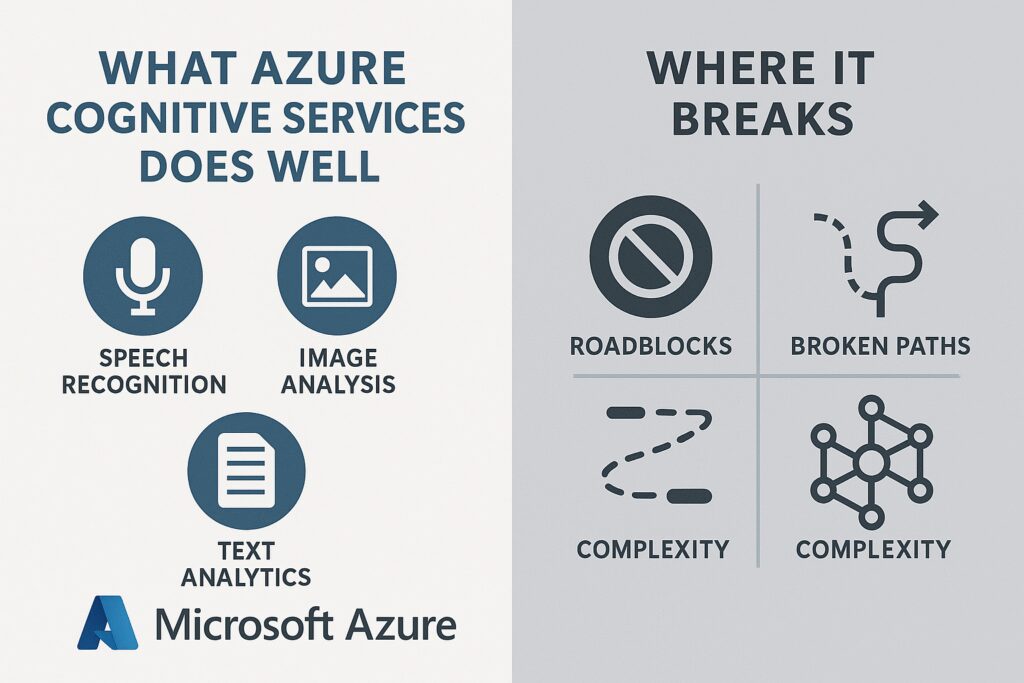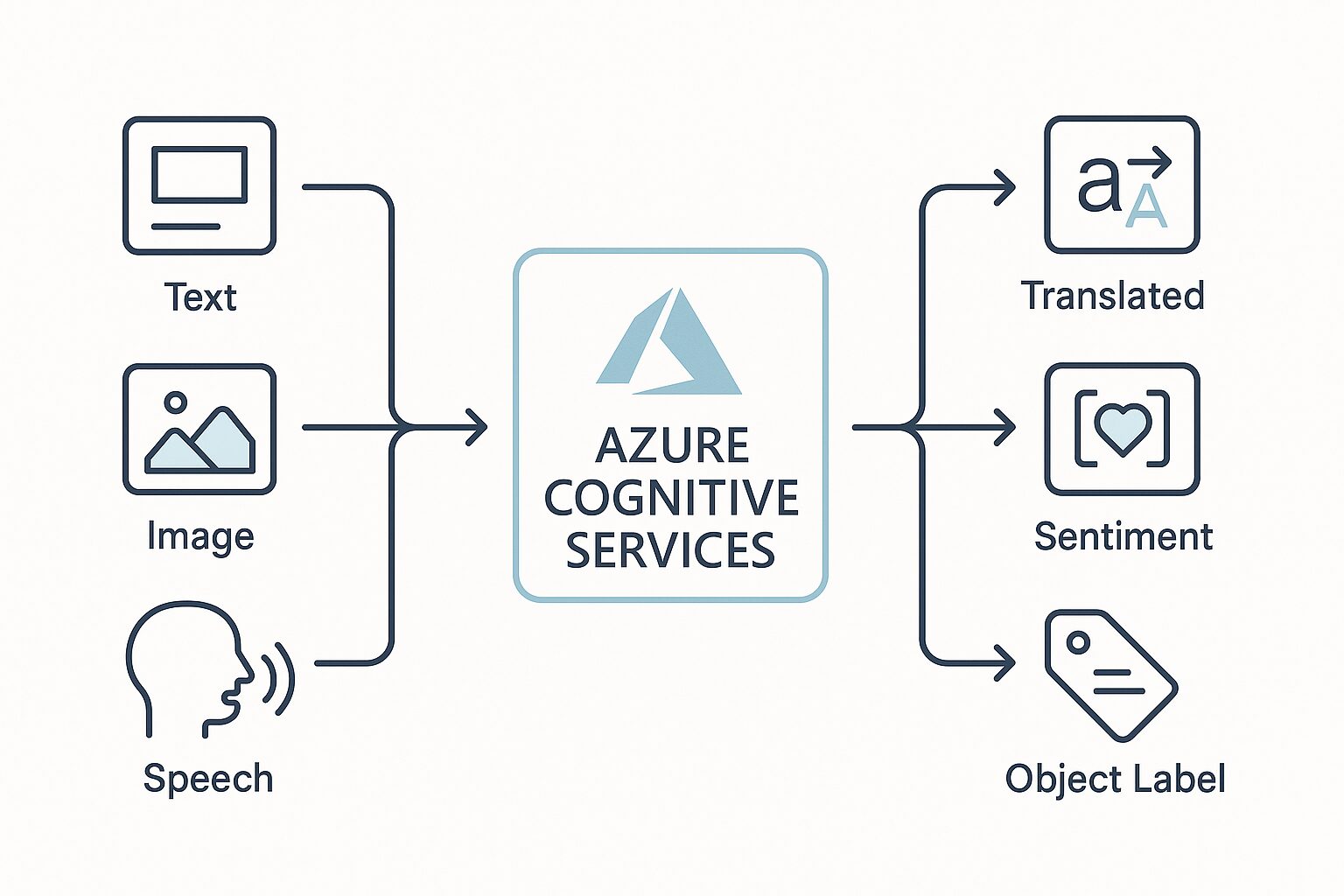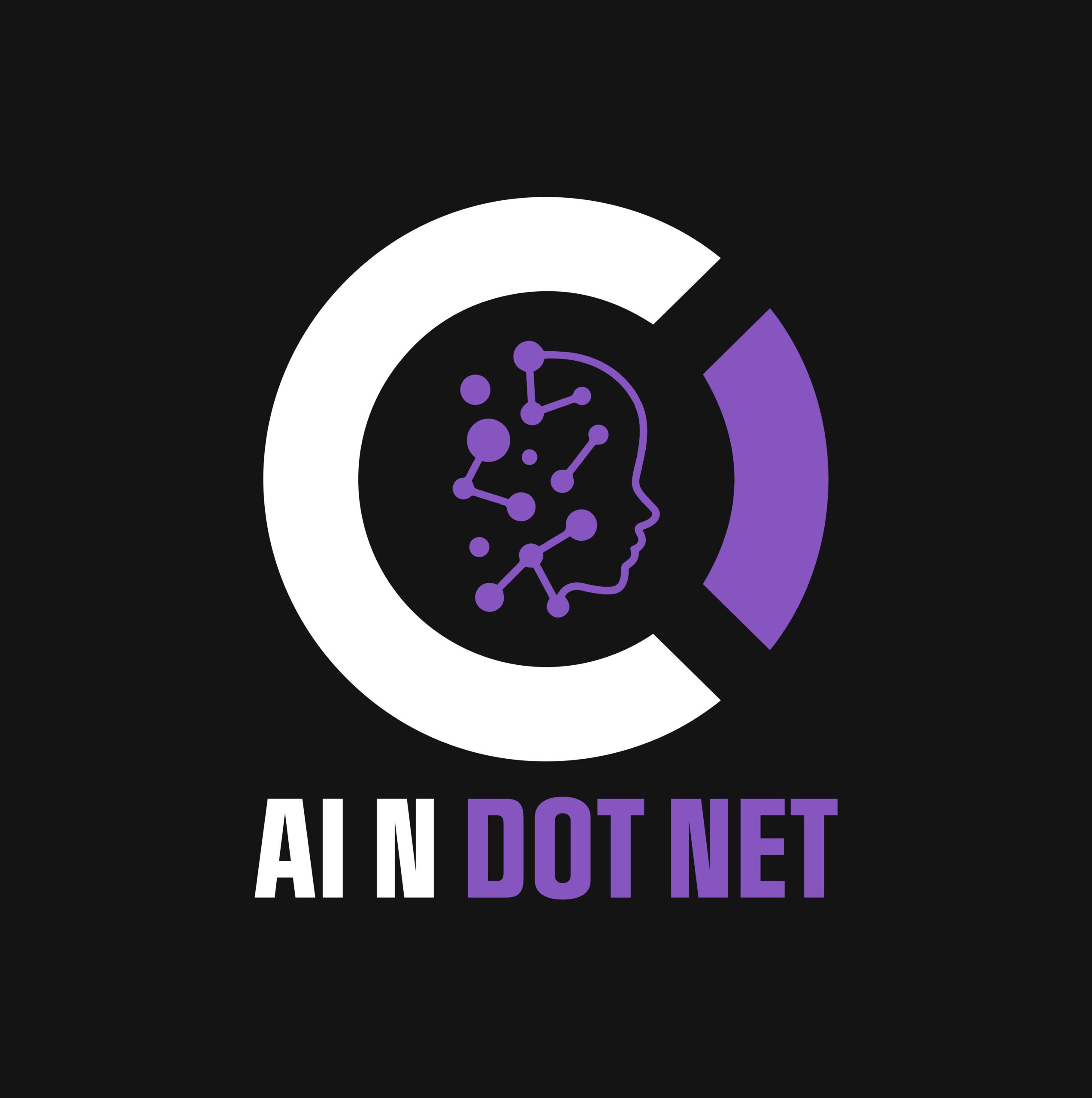Azure Cognitive Services is Microsoft’s suite of pre-trained, plug-and-play AI APIs covering vision, speech, language, and decision-making. It allows businesses to integrate powerful AI capabilities without needing to train models from scratch—an enticing prospect for many .NET and Azure-focused development teams.
But while these services offer quick wins and impressive demos, they are not without trade-offs.
✅ What Azure Cognitive Services Does Well
Rapid Prototyping for Common AI Tasks
- No data science team required to get started
- Ideal for proof-of-concepts and internal tools
- Great use cases: call transcripts, image recognition, text analytics
Tight Integration with Microsoft Stack
- REST APIs and .NET SDKs
- Works with Power Platform, Azure Functions, and Logic Apps
- Cloud + edge deployments supported
Enterprise-Grade Security
- SOC, HIPAA, GDPR compliant
- Integrated security features like RBAC and logging
Multilingual and Global-Ready
- 70+ languages supported
- Great for government and global enterprise environments

⚠️ Where Azure Cognitive Services Breaks
Shallow Customization
- Pretrained models are limited unless using premium customization tools
Cost Scales Poorly
- Pay-per-call pricing model becomes expensive at high usage
Limited Domain Adaptation
- Struggles with specialized language in industries like legal or medical
Lack of Explainability
- Black-box predictions unsuitable for regulated environments
When to Use Cognitive Services—and When to Move On
| Use Case | Azure Cognitive Services | Custom AI / ML.NET |
|---|---|---|
| Rapid MVPs and common AI tasks | ✅ Yes | ❌ Overkill |
| Specialized or complex domains | ❌ Poor fit | ✅ Recommended |
| Budget-conscious, high-volume apps | ❌ Costly | ✅ More efficient |
| Explainability and traceability | ⚠️ Risky | ✅ Fully traceable |

🧠 Final Thoughts
Azure Cognitive Services is a powerful starting point for integrating AI quickly—but as complexity grows, so do the limitations. Teams needing long-term control, cost-efficiency, or regulatory explainability should consider transitioning to ML.NET, Semantic Kernel, or Azure Machine Learning.

